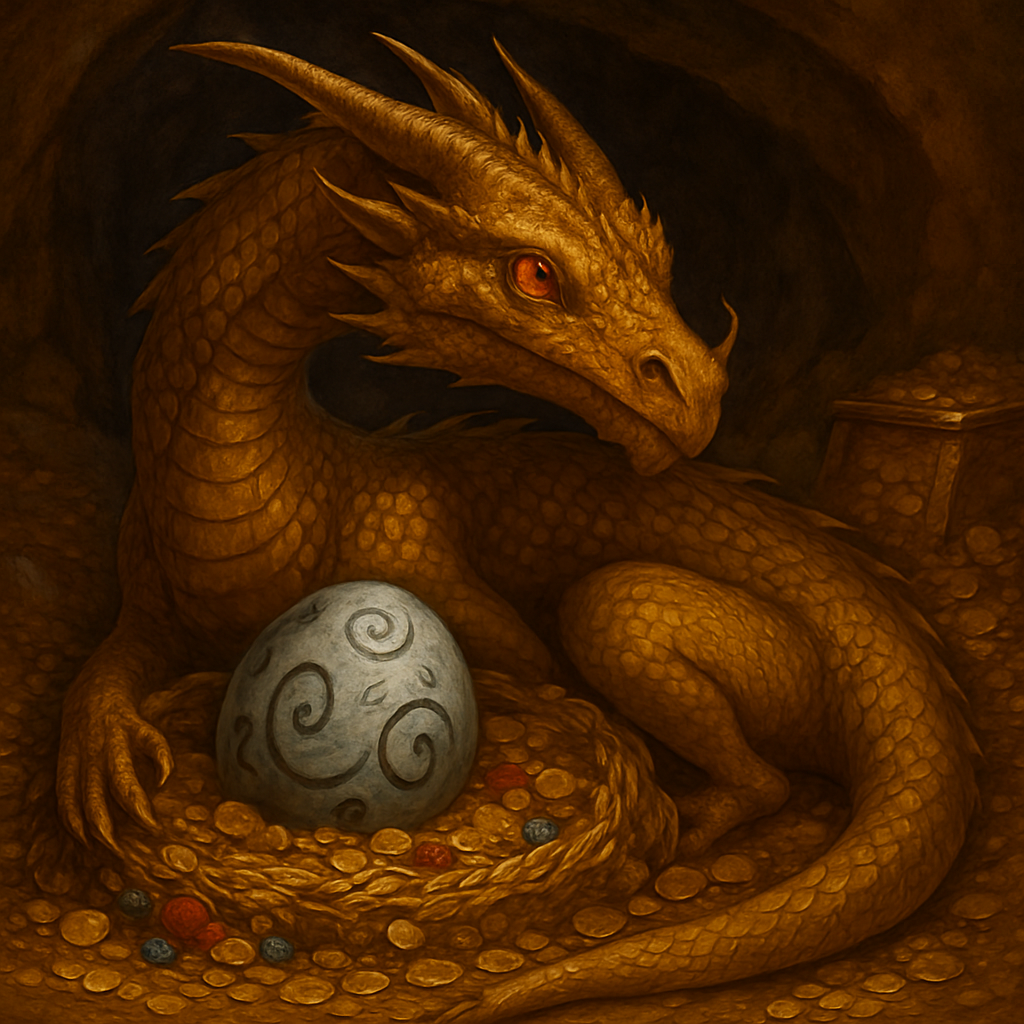For centuries, the Luck Dragon has fascinated storytellers, treasure hunters, and fantasy lovers alike. This mythical creature, often shrouded in mystery, has inspired countless legends—but no one has ever managed to capture one on film. Still, sightings, cave markings, and elaborate nests hint that Luck Dragons may not just be a figment of imagination.
What is a Luck Dragon?
A Luck Dragon is a rare dragon species believed to live deep underground, often inhabiting intricate cave systems far from human settlements. They are known for their fondness for gold, which they not only consume but also use to build their nests. This preference for subterranean life over aerial travel is due to their dense body mass, which makes long-distance flight impractical.
While most dragons are portrayed as fierce predators, Luck Dragons have a reputation for bringing unexpected fortune to those who encounter them—especially miners. There are numerous accounts of miners spotting a Luck Dragon and later stumbling upon gold-rich veins or streams scattered with gold nuggets.
Suggested external reading:
Appearance and Unique Features
Luck Dragons are among the most visually striking dragon species:
-
Scales: Typically golden with tiny, intricate patterns, though some appear reddish with dotted markings.
-
Eyes: Hatchlings are born with deep red eyes, which gradually change to orange-gold with age, reflecting their maturity.
-
Teeth: Two large front fangs protrude like tusks, while the rest of their teeth are needle-sharp for cutting metal from rocks.
-
Horn: A large central horn used for combat, territorial defense, and mate attraction.
-
Tail: Short and muscular, primarily used for swimming rather than flight balance.
-
Whiskers: Smooth, elongated, and sensitive—helping them navigate tight underground spaces.
Interestingly, Luck Dragons are known to glow gold during mating season as a form of courtship display or territorial warning.
The Luck Dragon’s Nest and Eggs
Luck Dragons create some of the most spectacular nests in the mythical world:
-
Materials: Gold, silver, rubies, sapphires, diamonds, and various cave minerals.
-
Eggs: Initially light blue with swirling black patterns, resembling rare gemstones.
-
Incubation: Eggs take roughly two years to hatch.
-
Longevity: Hatchlings, if well-nourished, can live up to 200–300 years, making them one of the longest-lived dragon species.
-
Weight: Eggs are unusually heavy, possibly contributing to the species’ limited flight capabilities.
Due to their rarity and beauty, empty Luck Dragon egg shells are often preserved in museums. The only known privately owned shell was eventually returned to a museum for public display.
Suggested external reading:
Behavior and Diet
Luck Dragons have unusual feeding habits compared to other dragons:
-
Diet: Rocks, boulders, and especially metals—gold and silver being their favorites.
-
Sense of Smell: Exceptionally sharp, allowing them to detect precious metals from long distances.
-
Temperament: Generally reclusive, but fiercely protective when eating or guarding a nest.
-
Treasure Greed: Once they find gold, they become fixated and may abandon other valuables in search of more.
Although they’re solitary by nature, a chance encounter between two Luck Dragons often results in both creatures fleeing—creating the illusion that they’re highly territorial hoarders.
Likes, Dislikes, and Playful Nature
Despite their intimidating size, Luck Dragons have a surprisingly playful side:
-
Likes:
-
Shiny objects like coins and jewelry.
-
Human weapons such as swords and shields, which they sometimes decorate with saliva to make them more flammable in dragon battles.
-
Swimming daily and sunbathing afterward to warm their scales.
-
-
Dislikes:
-
Being disturbed while eating.
-
Losing their hoard.
-
Luck Dragons have been known to collect gold chains, coins, and even relics purely for the joy of playing with them—rolling them around their lair or stacking them into intricate piles.
Lifespan and Health
While Luck Dragons can live for centuries, they are not immortal:
-
Mating Cycle: Occurs every 15 months, but courtship can last anywhere from six weeks to over a year.
-
Offspring: Only one hatchling per breeding cycle, born blind and with small horn nubs.
-
Health Risks: Prolonged exposure to their own fire can damage their scales, making them more vulnerable to predators. Sick dragons often lose their natural camouflage, putting them at greater risk.
Cultural and Mythical Significance
Luck Dragons have been woven into folklore across many cultures, often as symbols of fortune, wealth, and protection. They share thematic similarities with Eastern dragons, such as the Chinese Lung, known for their benevolent nature and association with prosperity.
In modern media, perhaps the most famous Luck Dragon is Falkor from The NeverEnding Story, a creature who embodies wisdom, loyalty, and the power of hope.
Suggested external reading:
Final Thoughts
The Luck Dragon remains one of the most captivating mythical creatures—equal parts treasure guardian and bringer of fortune. Whether real or imagined, it continues to inspire adventurers, storytellers, and dreamers to this day.
If you ever find yourself deep in a cave and catch a glimpse of something gold shifting in the shadows, you might just be in the presence of a Luck Dragon. But remember—fortune favors the brave… and those who don’t touch the dragon’s gold.
Read More: Webnewsing.com


